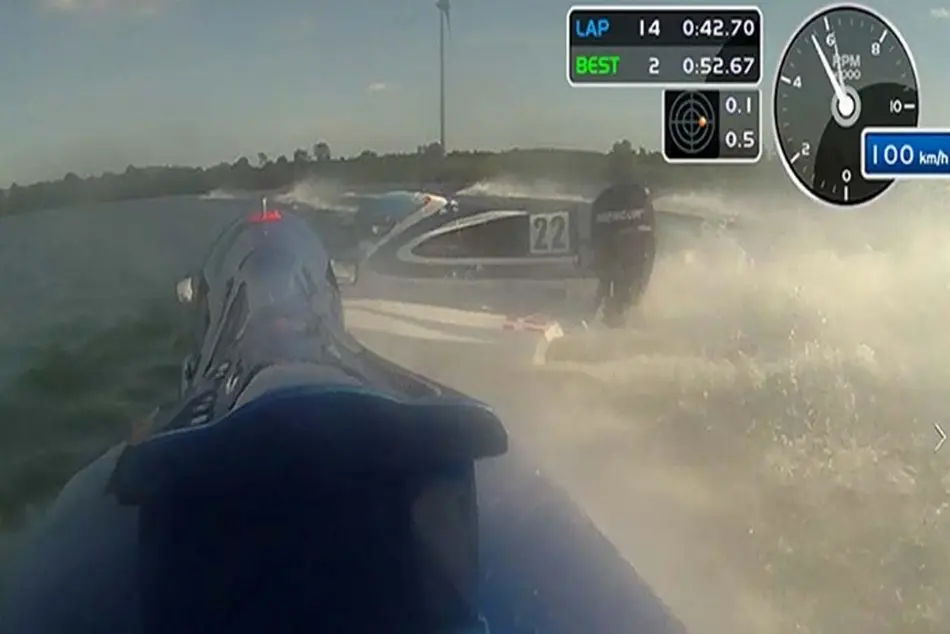Boat driver nears death due to inefficient emergency air supply
During an international powerboat racing event at Stewartby Lake, Bedfordshire, on 2 July 2017, two Formula 4 powerboats collided while rounding a buoy, resulting in serious injury to one driver. The UK MAIB issued an investigation report on the accident, highlighting lack of training and emergency response issues.

During an international powerboat racing event at Stewartby Lake, Bedfordshire, on 2 July 2017, two Formula 4 powerboats collided while rounding a buoy, resulting in serious injury to one driver. The UK MAIB issued an investigation report on the accident, highlighting lack of training and emergency response issues.
The incident
One of the drivers was quickly extracted by rescue teams unhurt. The other, injured by the collision and unable to release his cockpit canopy and harness, lost consciousness and almost drowned when his emergency air supply ran out. He was extracted and resuscitated by the rescue teams at the scene. Four days later, he was discharged from hospital and suffered no apparent long-term effects.
Probable Cause
- The collision occurred because Boat 22 veered suddenly and without warning into the path of Boat 43 and the drivers had no time to react.
- The drag caused by the loss of a panel from Boat 22’s port hull was identified as the most likely cause of the powerboat’s unexpected change of direction.
- Boat 43’s driver almost drowned because he was unable to free himself, or be extracted from the cockpit, before his emergency air supply ran out.
Conclusions
- A structural failure to Boat 22’s port hull probably caused it to turn into the path of Boat 43. Thereafter, the proximity and speed of the boats meant that the collision between them was unavoidable.
- Boat 43’s driver almost drowned because he was unable to escape or be extracted from his flooded cockpit before his air supply ran out.
- The injured driver did not follow the correct escape procedure. This might have increased the likelihood of his entrapment.
- An incorrectly sized emergency release hinge pin prevented the canopy from being jettisoned, and cost the rescue divers valuable time gaining access to the injured driver.
- The rescue divers had difficulty locating the seat harness release buckle because it was obscured by the driver’s body and cell suit.
- The carriage of a suitable knife for cutting the driver’s harness in an emergency is a sensible precaution.
- The F4 powerboats’ cockpit safety cells and deformable bow cones, and the driver’s safety harness and forward head restraints, provided critical protection to both drivers.
- Boat 43’s driver’s emergency air supply cylinder was not charged to its full design pressure. Had it been, he might have escaped or been rescued before he lost consciousness. Had the F4 powerboat carried a 10-minute duration air supply, as required for offshore powerboats, the driver would have escaped unharmed.
- The tight-fitting canopy release pin and undercharged emergency air supply should have been identified and action taken during the pre-race scrutineering process.
- The race should have been stopped by the OOD raising a red flag following the collision, but in the absence of information from the scene of the accident, the decision to continue at slow speed, under a yellow flag, did not adversely affect the rescue effort.
Source: safety4sea



